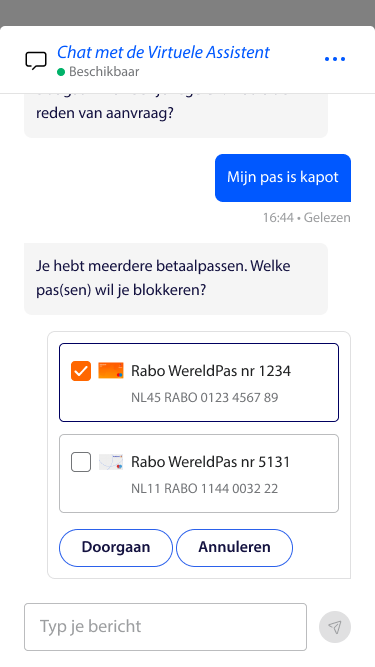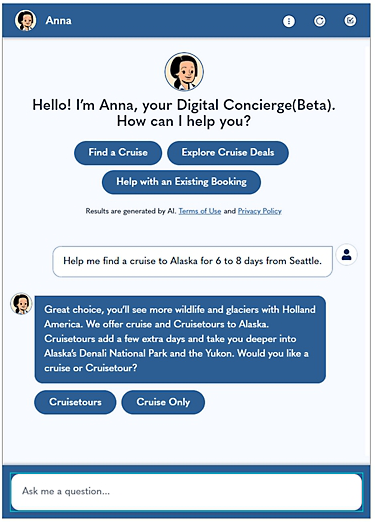Visualizing Value Rich Media in Conversational AI
As organizations accelerate digital transformation, conversations are no longer limited to humans; they’re happening between people and intelligent machines. From customer service portals to internal business apps, Conversational AI has become the digital front door of modern enterprises. Whether answering support queries, guiding sales interactions, or automating employee tasks, AI-powered chat interfaces are reshaping how organizations communicate and deliver value at scale.
But as these virtual assistants become more capable, users now expect them to be not only intelligent but also highly engaging and intuitive. This shift marks the beginning of a new era in conversational design - one that blends language understanding with visual storytelling.
What is Conversational AI?
Conversational AI refers to the combination of natural language processing (NLP), machine learning, and automation that enables computers to simulate human-like conversations.
Unlike traditional chatbots that rely on predefined scripts, conversational AI systems such as those built using Microsoft Copilot Studio can understand intent, context, and sentiment, responding in ways that feel more natural and relevant.
These systems power interactions across multiple channels from Microsoft Teams and Dynamics 365 to websites and mobile apps, allowing businesses to deliver consistent, personalized experiences.
For enterprises, conversational AI has become a cornerstone of digital transformation, helping improve support efficiency, reduce operational costs, and increase accessibility.
Yet, even with this progress, most conversational interfaces still depend heavily on plain text, limiting their ability to communicate complex ideas or emotions effectively.
What does Rich Media refer to in Conversational AI?
In conversational AI platforms like Microsoft Copilot Studio, rich media refers to any visual or interactive element that enhances text-based communication. This can include:
- Images and GIFs that simplify explanations or showcase products.
- Videos for tutorials, demos, or onboarding flows.
- Buttons, carousels, and adaptive cards for guided user navigation.
- Embedded links or documents for contextual learning and quick access to resources.
These elements not only make interactions visually appealing but also enhance cognitive comprehension, enabling users to process information up to 60,000x faster than with text alone.
But why does Rich Media matter in Conversational AI?
In human communication, over 70% of meaning is conveyed through visual and non-verbal cues. Chatbots and virtual assistants powered by Copilot Studio can replicate this human-like richness, bridging the emotional and informational gap between AI and users.
Rich media enhances conversations in multiple ways:
- Visual clarity: Complex workflows like CRM record updates or billing breakdowns can be simplified with screenshots or flow diagrams.
- Guided interactions: Buttons or cards can suggest next steps, reducing user confusion.
- Faster comprehension: Visuals and animations speed up understanding in support and learning contexts.
- Stronger engagement: Users spend more time interacting with visually guided chatbots.
- Improved brand recall: Consistent use of branded visuals reinforces identity and trust.
How Copilot Studio powers Rich Media?
Microsoft Copilot Studio (built on the Power Platform) allows developers and citizen makers to design conversational experiences enhanced with media and interactivity.
- Adaptive Cards Framework – Enables developers to insert buttons, images, and structured layouts within chat responses.
- Integration with Azure AI Services – Allows retrieval of contextual visuals or documents dynamically through Azure AI Search and OpenAI models.
- Channel Support – Rich media content can be seamlessly deployed across Teams, web chat, and Dynamics 365 apps, ensuring consistent UX.
- Data Connectivity – When combined with Dynamics 365 and Dataverse, Copilot bots can fetch data and present it visually, such as charts, invoices, or summaries.
Together, these capabilities help build visually intelligent assistants, not just text responders.
Pros and Cons of Rich Media in Conversational AI
When implemented strategically, the pros outweigh the cons, offering a tangible ROI through improved customer satisfaction and operational efficiency.
Real-World Brands Leading the Way
Let’s look at how leading brands across industries are using Copilot Studio and conversational AI to deliver smarter, more engaging customer experiences.
1. Rabobank – Conversational Banking
Rabobank, a global financial leader, modernized its customer communication by integrating Copilot Studio to deliver secure, compliant, and contextual digital banking conversations. Operating across multiple regions, Rabobank leverages the multilingual capabilities of Copilot Studio to serve customers in their local languages, such as Dutch and others.
Media-rich interactions, like step-by-step payment guides or visual tutorials for app setup, empower customers to resolve queries faster and build trust in the bank’s digital services, all within a familiar language interface.

🔗 Read Rabobank’s case study: https://learn.microsoft.com/en-us/power-platform/guidance/case-studies/rabobank-conversational-banking
2. Holland America Line – Travel & Guest Experience
Holland America Line deployed a Copilot-powered assistant, “Anna,” to improve traveler engagement and booking conversions.
By blending conversational guidance with visuals, itinerary previews, and destination videos, the cruise line delivers a personalized, visually rich experience that helps guests plan trips more confidently.

🔗 Explore the Holland America case study: https://learn.microsoft.com/en-us/power-platform/guidance/case-studies/holland-america-customer-experience
The future where Conversational Design meets AI
The evolution of chatbots from text-based responders to contextual visual communicators marks a pivotal shift in user experience design.
Emerging trends such as multimodal AI (combining text, voice, and visuals) and emotionally aware AI are poised to redefine how customers and employees interact with digital systems.
In this landscape, rich media is not an add-on; it’s a foundational capability that transforms conversations into experiences.
Final Thoughts
The evolution of conversational AI is about more than efficiency; it’s about connection.
By embracing rich-media responses in Microsoft Copilot Studio, organizations can make every customer interaction more human, engaging, and action-oriented.
As brands like Eneco, Rabobank, and Holland America Line have shown, visual storytelling inside conversations enhances both understanding and trust.